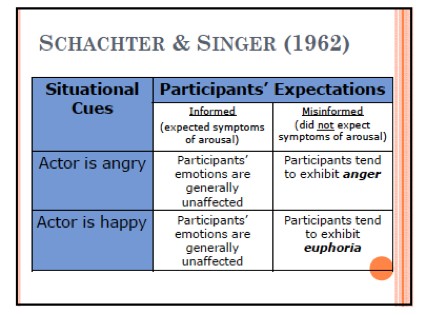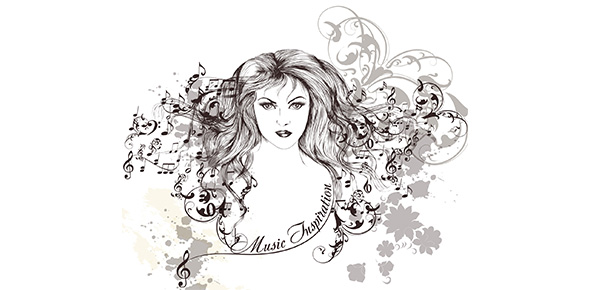Related Flashcards
Related Topics
Cards In This Set
| Front | Back |
|
Self-Concept:
|
(+) The self-concept is the sum total of a person’s beliefs about his or her own attributes. It is the cognitive component of the self.
The sum total of an individual’s beliefs about his or her own personal attributes. |
|
What is meant by self-recognition? What might this indicate about an individual’s ability to perceive oneself?
|
(+) Using brain scans, social neurscientists find that certain areas become relatively more active when people process self-relevant information.
(+) Recognizing oneself as a distinct entity is the first step in the development of a self-concept. self-recognition: seeing oneself as a distinct entity Many believe self-recognition (seeing oneself as a distinct entity) is necessary for the concept of “this is me”, and “this is not me”. Without the presence of others, one would be unable to distinguish themselves as an entity, and therefore be unable to perceive themselves. |
|
Charles Horton Cooley (1902)
|
Charles Horton Cooley (1902)
the “looking-glass self” (mirror)- many researchers belief that we would be incapable of forming a self-concept in the absence of others. (+) Human beings and apes are the only animals to recognize their mirror-image reflections as their own. (+) Cooley’s “looking-glass” self suggests that social factors are necessary for a second step. |
|
What is introspection?
|
(+) People believe that introspection is a key to knowing the true self.
introspection: looking inward at one’s own thoughts and feelings -meditation, psychotherapy, religion (searching one’s soul or conscious), dream analysis, hypnosis. |
|
What is affective forecasting? What is the durability bias?
|
(+) People also tend to overestimate their emotional reactions to future positive and negative events.
Affective Forecasting: The process of predicting how one would feel in response to future. Durability Bias: we tend to underestimate how long some emotion will last. We don’t know our own coping mechanisims until we face something dead on, without preparation. |
|
Make sure that you clearly understand Bem’s Self-Perception Theory.
|
(+) Bem’s self-perception theory holds that when internal states are difficult to interpret, we infer our inner states by observing our own behavior and the surrounding situation.
Self-Perception Theory: The theory that when internal cues are difficult to interpret people gain self-insight by observing their own behavior. people learn about themselves the same way outside observers do, by watching their own behavior. How do we learn about ourselves? Bem says we learn about ourselves the same way we learn about other people. We watch, observe, and draw conclusions.. |
|
What is the facial feedback hypothesis, and how is it consistent with self-perception theory?
What about this theory is counter-intuitive? |
(+) Based on self-perception theory, the facial feedback hypothesis states that facial expressions can produce –not just reflect—an emotion state (smiling can cause us to feel happy)
Facial Feedback Hypothesis: The hypothesis that changes in facial expression can lead to corresponding changes in emotion. Consider two examples of participants: Everyone is shows the same humorous material, like cartoons, comedy sketches, the only difference is one group is asked to hold a pen in their mouth, and one is asked to hold a pen in their teeth. Teeth thought it was funnier because they are mimicking a smile, whereas the mount, is like a frown. So, this is feedback to the brain, “oh, I’m smiling, this must be funny”. If we force ourselves to play the role of someone else, someone it can help us to get out of a funk a little bit sooner. (+) But it’s unclear if the emotion occurs via self-perception or because facial expressions trigger psychological changes that produce the emotional response. We tend to assume, if I’m happy, I will smile. Bem says, “if you smile, you will conclude you are happy”. What shapes our perceptions of ourselves are our behavior |
|
What is the over-justification effect?
|
(+) Also derived from self-perception theory, the over-justification effect shows that people sometimes lose interest in activities for which they were rewarded.
Over-Justification Effect: The tendency for intrinsic motivation to diminish for activities that have become associated with reward or other extrinsic factors. (+) But if a reward is seen as a “bonus” for superior performance, then it can enhance intrinsic motivation by providing positive feedback. Intrinsic vs. Extrinsic awards: if you’re intrinsically motivated to do something you’re doing it because you wanted to do it. It’s its own award. Extrinsic, because someone else wants you to, or maybe you’ll get paid, or get attention, for some external reason. Athletes: when young, it’s about the love of the game, intrinsicly motivated, overtime the game gets motivated by money and external factors.) |
|
What is the main idea of social comparison theory? To whom do we tend to compare ourselves?
|
(+) According to social comparison theory, people often evaluate their own opinions and abilities by comparing themselves to cimilar others.
Social Comparison Theory: The theory that people evaluate their own abilities and opinions by comparing themselves to others. (Festinger, 1954). how do we judge who we are? We evaluate ourselves based on other people. (comparing your test results to class results) |
|
What is the two-factor theory of emotion? What are the 2 factors?
|
(+) Schachter and Singer proposed that the experience of emotion is based on two factors: physiological arousal and a cognitive label for that arousal.
Two-factor Theory of Emotion: The theory that the experience of emotion is based on two factors: physiological arousal and a cognitive interpretation of that arousal. physiological arousal- every theory of emotion will have something to do with what’s happening with our bodies cognitive interpretation-the importance of what’s going on in the context –or how you make sense of it –cognitive interpretation. Ex –what does this mean?) (+) Under certain conditions, people interpret their own arousal by watching others in the same situation. |
|
Make sure you understand the classic Schachter and Singer experiment (1962) that demonstrated this theory.
|
 Injected male subjects with adrenaline, they were told it was a vitamin supplement, and either explained the effects or did not. Subjects were either in the presence of an angry confederate, or happy confederate. If the participants are informed about the injection, when they start feeling it (they’ll remember the injection) they are less effected by what’s going on around them. But when they don’t have explanation, and look toward their environment for an explanation of their emotions –and they would take on the properties of the other person nearby. if I’m physiological arousal and don’t know why, I’m likely to use cognitive interpretation to determine why they feel the way they do. |
|
What are “flashbulb memories”? Are flashbulb memories particularly accurate?
|
flashbulb memories (remembering where you were on 9/11, who you were with, what you were wearing –these are not always accurate. People’s stories tend to change –especially details. Maybe we tend to trust our memories more than we should. )
(+) Memory of one’s life events is critical to the self-concept. (+) When people recall life experiences, they typically report more events from the recent past than from the distant past, through some types of memories are generally morevivid and lasting than others. (+) Autobiographical memories are shaped by self-serving motives, and people overemphasize their own roles in their past events. |
|
Dialecticism:
|
An Eastern system of thought that accepts the coexistence of contradictory characteristics within a single person.
|
|
Self-Esteem:
|
(+) Self-esteem refers to a person’s positive and negative evaluations of the self.
|
|
Self-Schema:
|
A belief people hold about themselves that guides the process of self-relevant information.
(+) when we come into a situation we are more likely to focus on and remember things that are important to us, insecurities, things that matter to us, in the forefront of our minds, that is what we are going to notice about someone else. You can be a-schematic (not schematic for something) |






